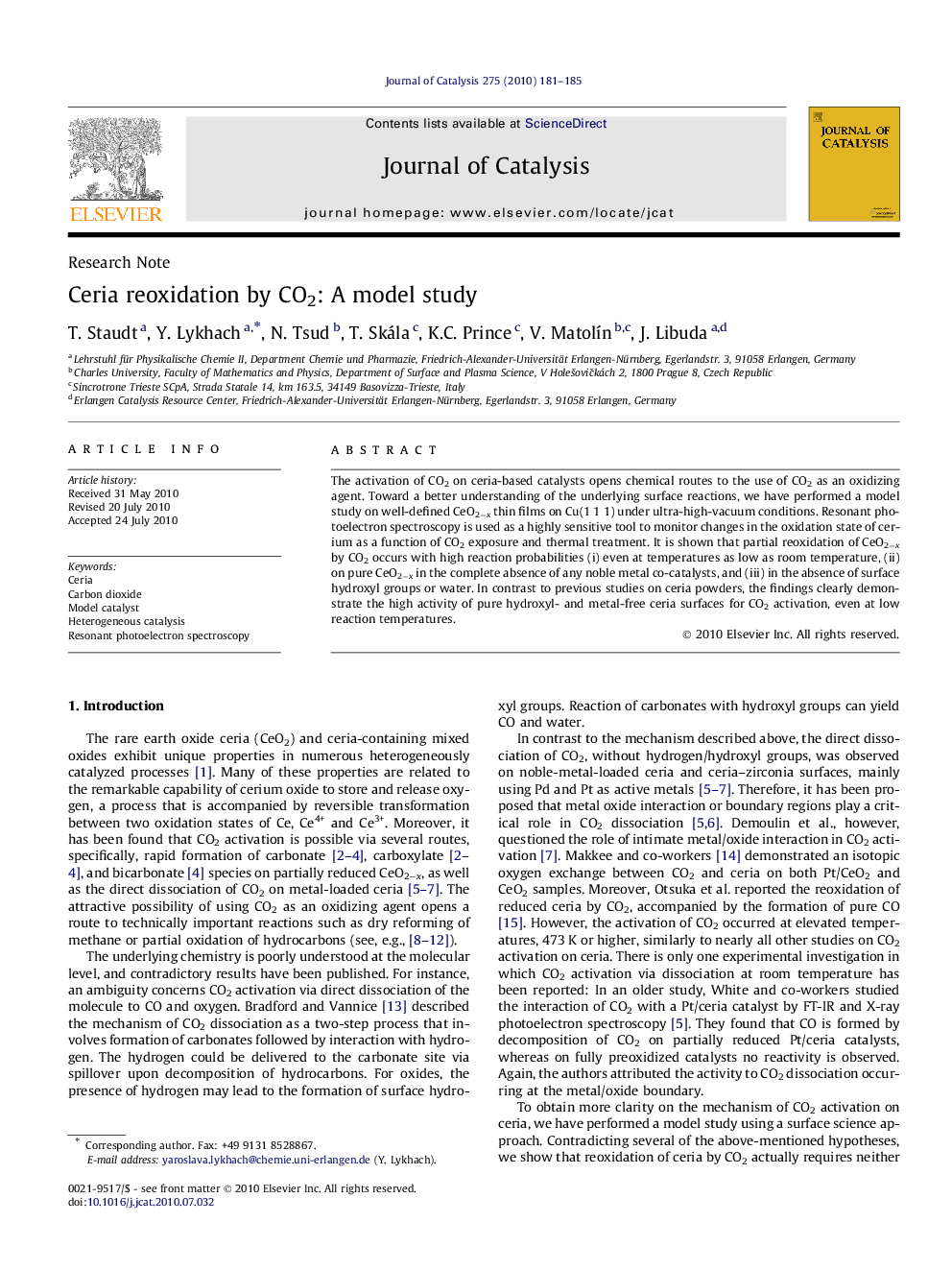| کد مقاله | کد نشریه | سال انتشار | مقاله انگلیسی | نسخه تمام متن |
|---|---|---|---|---|
| 62169 | 47624 | 2010 | 5 صفحه PDF | دانلود رایگان |

The activation of CO2 on ceria-based catalysts opens chemical routes to the use of CO2 as an oxidizing agent. Toward a better understanding of the underlying surface reactions, we have performed a model study on well-defined CeO2−x thin films on Cu(1 1 1) under ultra-high-vacuum conditions. Resonant photoelectron spectroscopy is used as a highly sensitive tool to monitor changes in the oxidation state of cerium as a function of CO2 exposure and thermal treatment. It is shown that partial reoxidation of CeO2−x by CO2 occurs with high reaction probabilities (i) even at temperatures as low as room temperature, (ii) on pure CeO2−x in the complete absence of any noble metal co-catalysts, and (iii) in the absence of surface hydroxyl groups or water. In contrast to previous studies on ceria powders, the findings clearly demonstrate the high activity of pure hydroxyl- and metal-free ceria surfaces for CO2 activation, even at low reaction temperatures.
Reduced ceria can be reoxidized by CO2 at room temperature in complete absence of any noble metal co-catalysts, surface hydroxyl groups, or water on its surface.Figure optionsDownload high-quality image (191 K)Download as PowerPoint slide
Journal: Journal of Catalysis - Volume 275, Issue 1, 30 September 2010, Pages 181–185